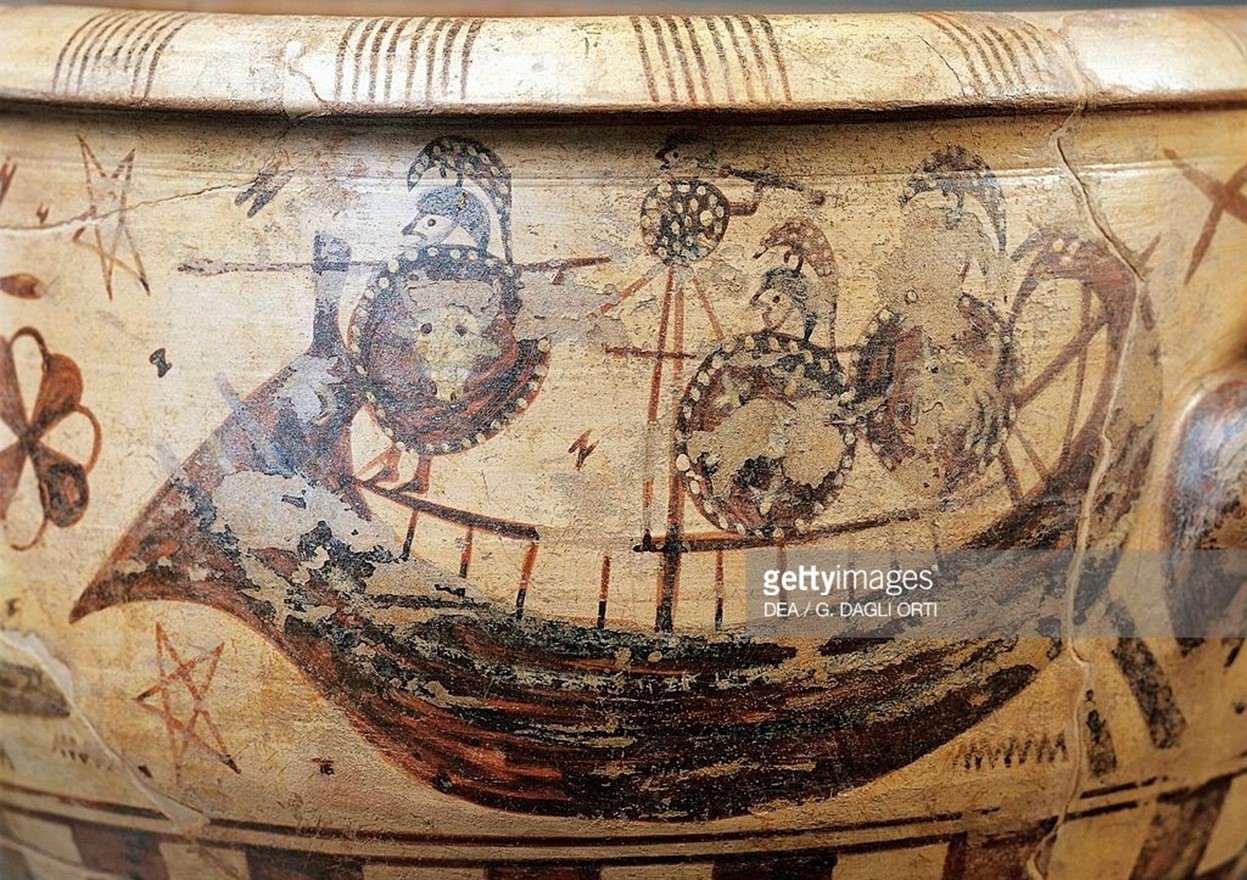Left ship: Single-levelled decked galley facing right. Medium thick flat hull, massive triangular bow with a large realistic eye and a concave stempost. The ram extends straight from the keel-line; it is very thick and does not taper into a sharp point as on Geometric depictions. Very high curving stern, with the helmsman partially protected by a large shield, operating a single steering oar with a rectangular oar blade. Immediately below the gunwale is a row of six circular ports depicted as reserved circles with a dot inside. Five rowers of diminutive stature face left. Their torsos are upright and their arms are extended, touching the gunwale at the point of an oar port. Five oars appear below the hull. Immediately above the rowers' heads is a thin line representing the deck on which the warriors stand. The three spears stored at the stern partially disappear behind the shield.
Right ship: Single-levelled decked merchant ship facing left. Deep crescent shaped hull, with the bow raised out of the water and a down-pointing triangular bow projection. The stempost forms a straight uninterrupted line starting from the tip of the bow projection that inclines backwards. This line breaks abruptly at the top of the bow where it is capped by a thick vertical post. Three planks project from the stem, painted in white. Very high incurving sternpost ending in a two-pronged device and buttressed by a strut. Above the gunwale is a thin line supported by nine stanchions forming eleven rowers' rooms, on top of which stand the warriors as on the other ship. The forecastle is solid, while the aftercastle has a rail that extends beyond the stern. There are two steering oars but no helmsman. The mast is amidships, with three halyards and a crow's nest on top. The crow's nest is represented as a diminutive figure, whose body is hidden behind a shield, with his head and one hand emerging, wielding a spear.







